vSAN Stretched Clusters for Azure VMware Solution
Overview
The purpose of this document is to provide an overview and technical details specifically for vSAN Stretched Clusters for Azure VMware Solution (AVS). More generic details about vSAN on AVS covering local storage policies, Run commands, monitoring, responsibilities, and more can be found in our vSAN technical guide.
A stretched cluster is configured by deploying an AVS private cloud across two availability zones (AZs) within the same region and placing a vSAN witness in a third AZ in that same region. The vSAN witness continuously monitors all hosts within the cluster to serve as a quorum in case of split-brain scenarios, and is fully managed by Microsoft. The hosts within the private cloud are evenly deployed across regions and operate as a single entity, and storage policy-based synchronous replication ensures data is replicated across AZs delivering a recovery point objective (RPO) of zero. This means that if one AZ goes down due to a natural disaster or some other unexpected event, the other AZ can continue to operate and provide uninterrupted access to critical workloads.
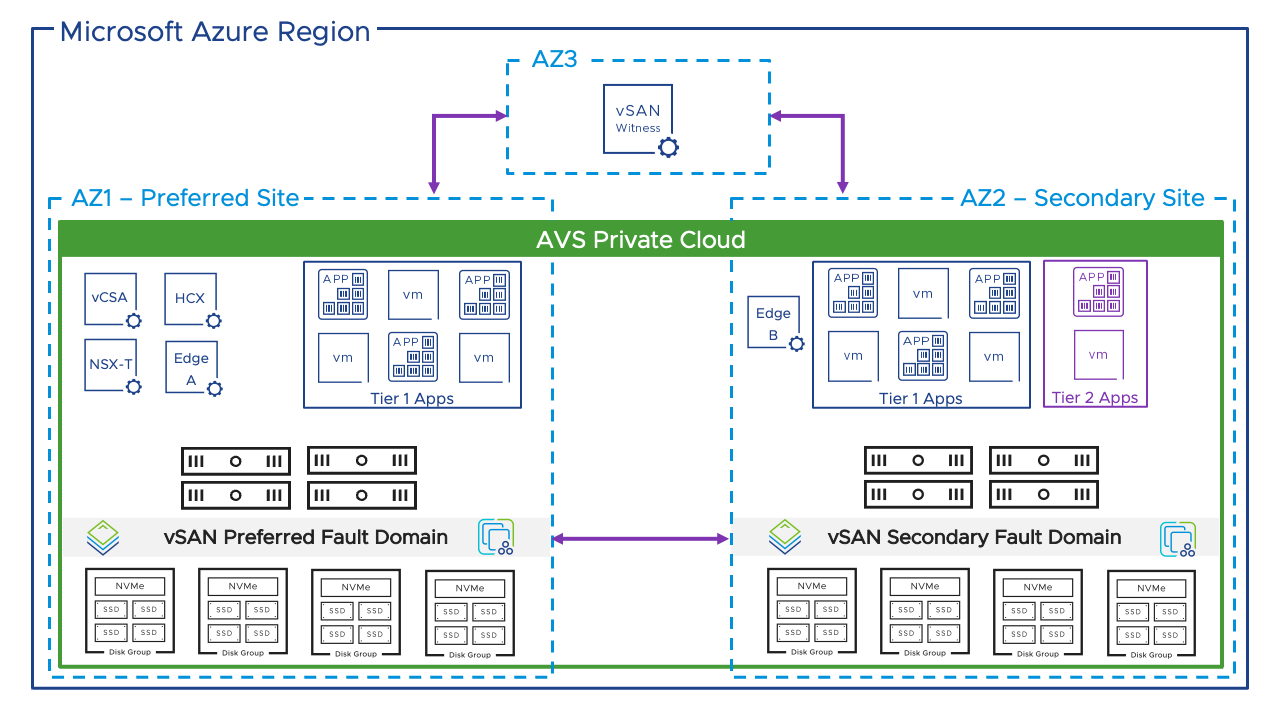
It should be noted that while stretched clusters offer additional protection and resiliency, they don’t address all failure scenarios such as regional failures or certain inter-AZ failures. Designing application workloads for redundancy and having a proper DR plan in place is always highly recommended.
vSAN Clusters
Hosts and Capacity
AVS offers three different host types; in addition to having different CPU and RAM specs, they also have different storage footprints. vSAN datastore capacity is increased by adding additional hosts to the cluster. Currently, stretched clusters are only available for use with AV36 or AV36P depending on the region they’re deployed in. Hosts must be deployed evenly across AZs within the region, with a minimum of 6 (3 per AZ) and a maximum of 16 (8 per AZ).
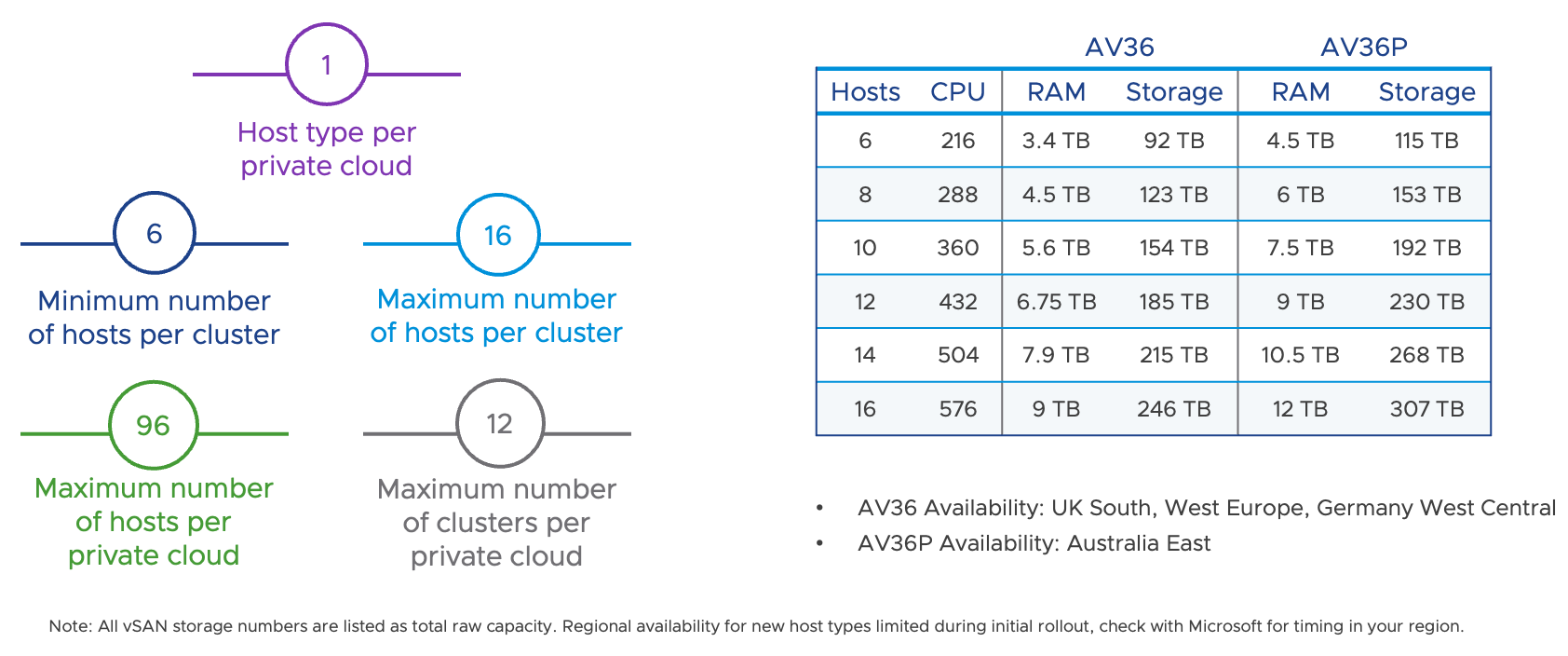
The total amount of storage per host is shown as raw capacity, for example, a standard 3 host AV36 cluster provides 46.2 TB of raw capacity, a stretched cluster would technically have 92.4 TB of raw capacity. However, the total usable capacity will vary based on a number of variables such as RAID, Primary Failures to Tolerate (PFTT, or site disaster tolerance), and Secondary Failures to Tolerate (SFTT, or local FTT), compression, deduplication, thin vs thick provisioning, and slack space. With these variables in mind, it’s likely you’ll have far less available capacity than anticipated, and it’s strongly recommended to ensure appropriate cluster sizing based on capacity needs.
All hosts are separated evenly into two fault domains labeled Cluster-n_FD_01 and 02. Each fault domain is associated with a specific AZ. You can also see which hosts reside in which AZ both in the vSphere Client, and in the Azure Portal by viewing or editing the cluster.
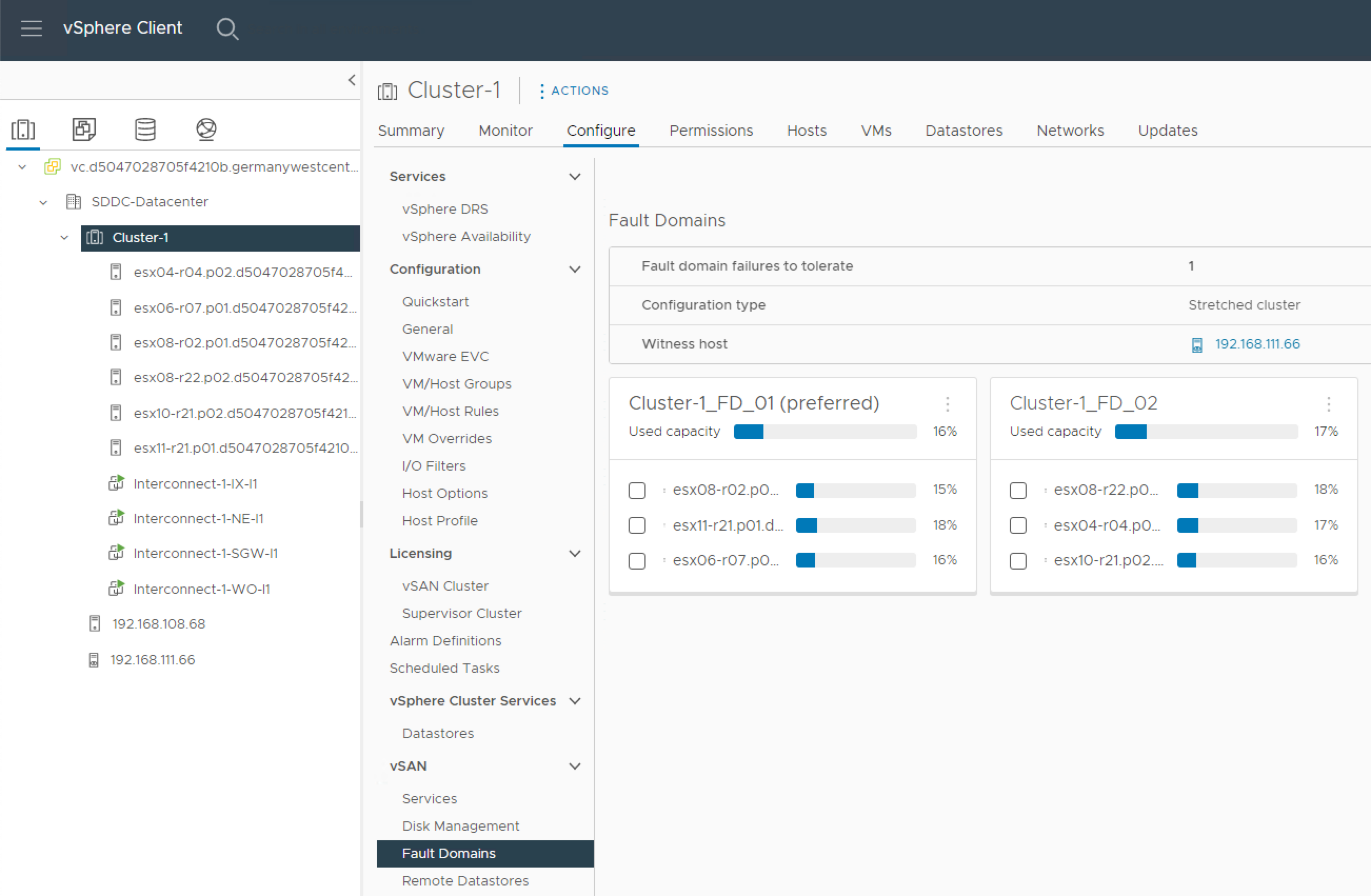
Stretched Cluster Limitations
- A new, separate, Azure subscription must be used when deploying a stretched cluster.
- Standard and stretched clusters cannot co-exist in the same private cloud.
- The type of cluster – standard or stretched – must be chosen at the time of deployment; a cluster cannot be converted after it has been deployed.
- Clusters must contain the same host type.
- Some GA features of standard clusters may not be available yet for stretched clusters.
- Scale in and scale out of a stretched cluster must be in pairs.
vSAN Configuration
Microsoft manages the vSAN cluster configuration, and customers do not have the ability to modify the configuration.
Enabled by default:
- Space efficiency services (deduplication and compression)
- Data-at-rest encryption
- Provider managed, encryption keys are created at the time of deployment and stored in Azure Key Vault.
- If a host if removed from a cluster, the data on the local devices is invalidated immediately.
- Customers have the option to manage their own keys after deployment.
Disabled by default:
- Operations reserve
- Host rebuild reserve
- vSAN iSCSI Target Service
- File Service
vSphere HA
vSphere HA is configured to restart VMs during host failure or isolation. Admission control failover capacity is configured by reserving 50% of the CPU and memory capacity of the entire stretched cluster to ensure that VMs can fail between AZs and have adequate resources. All management VMs (vCenter, NSX Managers, etc.) are given the highest restart priority in the event of a failure.
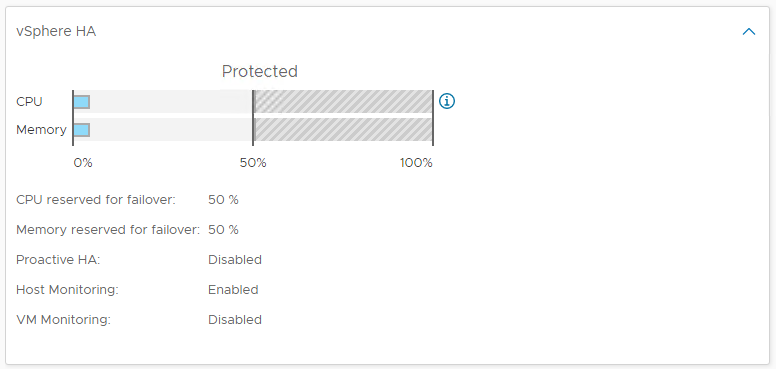
vSphere DRS
vSphere DRS is configured as fully automated, with a migration threshold set to 3 by default. Special DRS Host Groups are created for each fault domain, and an NSX Edge VM is placed in each group.

Storage Policies
In addition to the standard cluster storage policies, 15 additional storage policies are available for Stretched Clusters. These policies are a combination of RAID-1,5, and 6 with PFTTs for Dual Site, Preferred, and Non-Preferred and various SFTTs.
Default Storage Policy
The default policy for all of the SDDC management VMs—including the vCenter Server Appliance, NSX-T Manager, and NSX-T Edges—is labeled Microsoft vSAN Management Storage Policy.
If you’re familiar with vSAN, you know there is a vSAN Default Storage Policy. In AVS, this does exist, however it is NOT the default storage policy applied to the cluster. This policy exists for historical purposes only, and this is where confusion may set in. This is a vSAN Default Storage Policy … policy.
Upon closer inspection you’ll notice that the Object space reservation is set to thick provisioning.
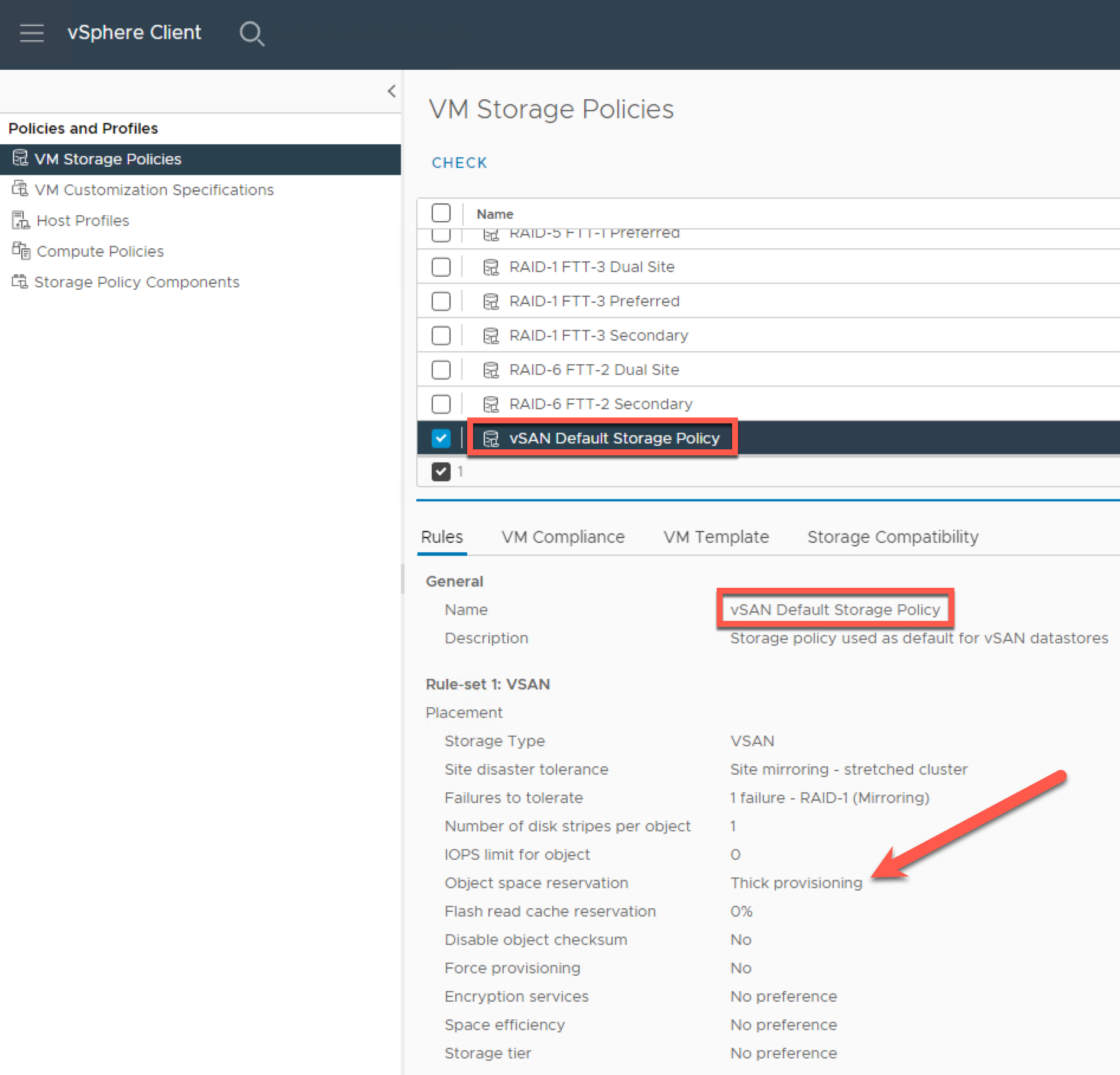
The actual default storage policy setting for stretched clusters is set to RAID-1 FTT-1 Dual Site, with Object space reservation set to Thin provisioning.

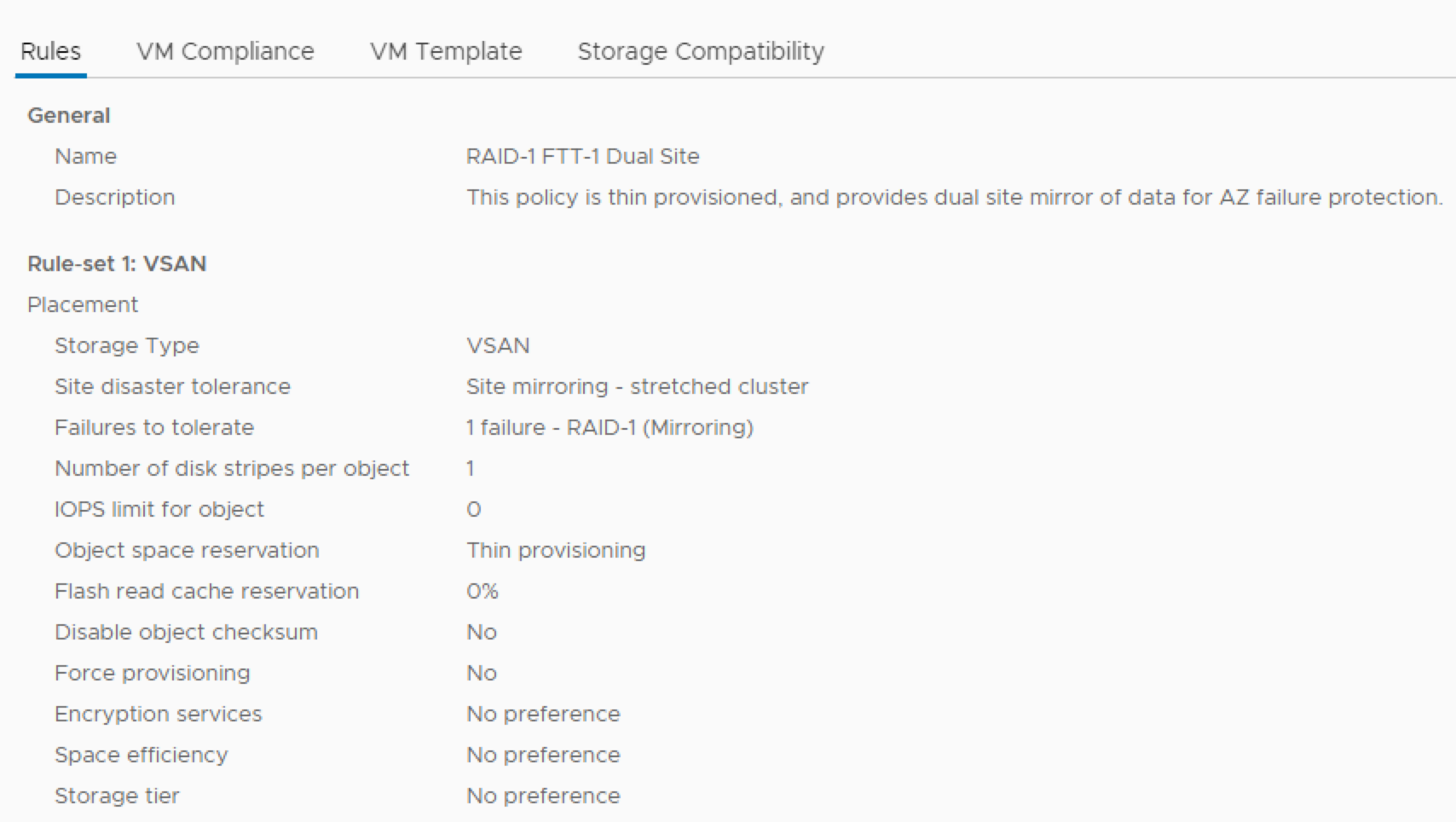
The difference between the two is one is set to thick provisioning, and one is set to thin provisioning.
In a 6 host cluster, this policy enables RAID-1 mirroring and protects VMs not only against a single host failure, but a site failure as well. This policy does, however, require double the storage per virtual machine.
Configuring Storage Policies
As hosts are added to the cluster, it’s recommended to change both the default storage policy and VM disk policies to ensure appropriate capacity utilization, availability, and performance for each virtual machine based on the number of hosts provisioned.
It’s important to understand that storage policies are applied during initial VM deployment, or during specific VM operations – cloning or migrating. The default storage policy cannot be changed on a VM after it’s deployed, but the storage policy can be changed per disk.
In most cases customers should be using RAID-5 or RAID-6 with FTT set to 1 or 2 depending on their cluster size. If you start off with a 6 host cluster, the policy will default to RAID-1 FTT-1. If you know that you’ll expand the cluster in the near future, I recommend deploying with 8-12 hosts from the start.
The following are common storage policies are introduced when a stretched cluster is deployed:
Primary Failures to Tolerate (PFTT)
- Dual Site Mirroring
- None – Keep data on preferred fault domain
- None – Keep data on non-preferred fault domain
Secondary Failures to Tolerate (SFTT)
| RAID | FTT | Minimum Hosts |
| RAID-1 (Default) | 1 | 3 per AZ |
| RAID-5 | 1 | 4 per AZ |
| RAID-6 | 2 | 6 per AZ |
Network Connectivity
The connectivity between AZs where the stretched clusters are deployed has bandwidth of at least 10 Gb and a maximum of 5ms round trip time (RTT).
If you’re using an ExpressRoute circuit to connect your on-premises data center to your AVS private cloud, you should considering peering both AZs to this circuit with Global Reach to ensure connectivity isn’t lost in the event of an AZ failure.
While standard charges will be incurred for things like hosts, ExpressRoute circuits, ExpressRoute gateways, etc, there are no charges for inter-AZ traffic or for the vSAN witness node.
Because this is a single AVS Private Cloud being deployed across AZs, your management network addresses are retained, and your NSX segments are extended, across AZs. Additionally, NSX-T edges are pinned to each AZ with BGP.
SLA
While vSAN Stretched Clusters are designed to provide a SLA of 99.99%, while standard clusters provide 99.9%, a number of conditions must be in place:
- VMs must use a storage policy configured with a PFTT of Dual Site Mirroring and a minimum SFTT of 1.
- Compliance with the Additional Requirements captured in the SLA Details of Azure VMware Solution.
Summary and Additional Resources
Additional Resources
For more information about vSAN, you can explore the following resources:
- vSAN for Azure VMware Solution
- VMware vSAN Stretched Cluster Guide
- Microsoft Documentation: Deploy vSAN Stretched Clusters
- VMware Documentation: Administering VMware vSAN
- VMware Documentation: vSAN Monitoring and Troubleshooting
Changelog
The following updates were made to this guide:
| Date | Description of Changes |
| 2023/06/13 |
|
About the Author and Contributors
- Jeremiah Megie, Principal Cloud Solutions Architect, Cloud Services, VMware
